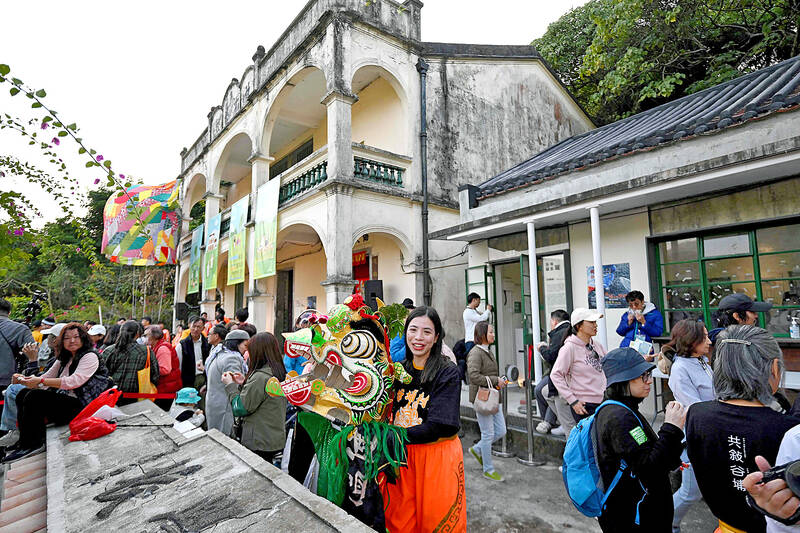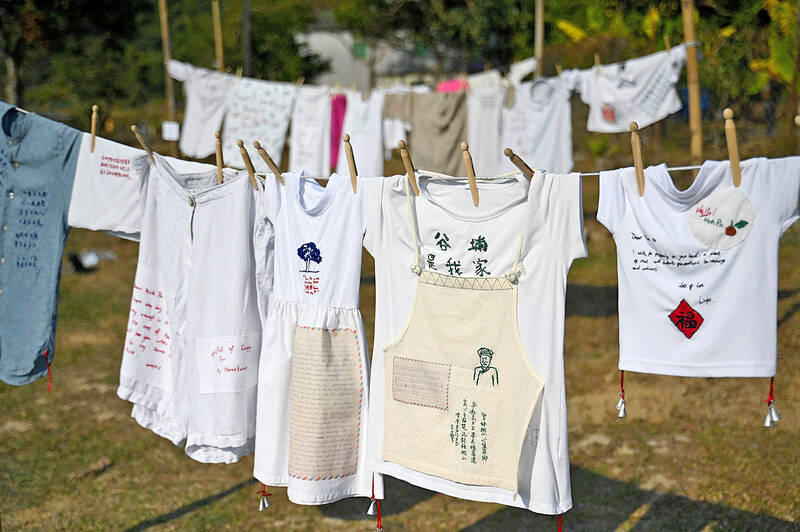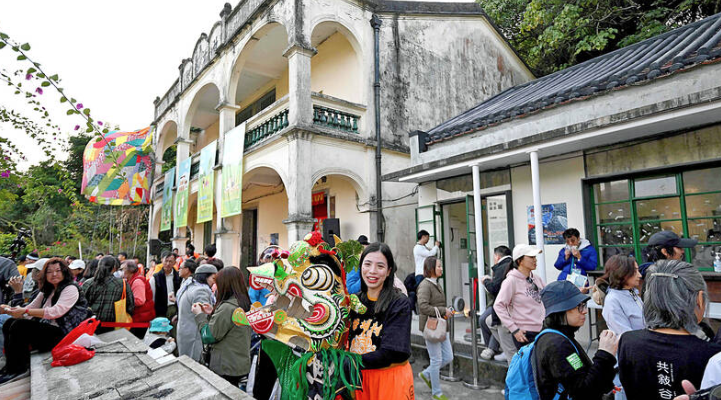AFP, HONG KONG
Tourists in Hong Kong are flocking to the 300-year-old village of Kuk Po, whose decaying mansions and reed fields offer a respite from the former British colony’s famously frenetic pace.
The seaside village was once home to Hakka people from southern China, but was mostly abandoned in recent decades, even as gleaming high-rises sprang up in nearby Shenzhen across the Chinese border.
However, Hong Kong’s government is encouraging visitors to go off the beaten path and has loosened entry restrictions to the territory’s northernmost neighborhood of Sha Tau Kok — making it easier to visit Kuk Po via speedboat.

A photo taken on Saturday last week shows visitors at the old school house in the 300-year-old seaside Kuk Po village at the edge of Hong Kong.
Photo: AFP
RUSTIC CHARM
On a recent weekend this month, tourists thronged to the village’s picturesque sights, surrounded on three sides by gentle valleys.
“When people talk about Hong Kong, it was about the skyline, the city area, the financial hub,” Singaporean exchange student Kevin Choy said.

A photo taken on Saturday last week shows an artwork on display in the 300-year-old seaside Kuk Po village at the edge of Hong Kong.
Photo: AFP
“Very rarely do people talk about the countryside,” the 24-year-old said.
“This side of Hong Kong is something that I never imagined,” he added.
Lilian Lee, whose family has deep roots in Kuk Po, said her parents returned there during the COVID-19 pandemic to enjoy the charms of village life — a choice that may resonate with stressed-out city-dwellers.
In 2022, she started welcoming visitors into her family’s two-story ancestral home — built nearly a century ago.
“The world outside is very stressful and chaotic … but here you can relax and be at ease,” the 30-year-old said.
“This is a beautiful environment that should be treasured [and] our family came together to share this place with more people,” she said.
The Hakka — whose name means “guest people” — are known for their long history of migration and transformed Kuk Po into a market town, though its numbers dwindled after Hong Kong urbanized in the 1960s.
Tour organizer Paul Chan said sustainable tourism was driving more tourists to visit the near-deserted town.
“When the public is interested, it creates a virtuous cycle: for houses and monuments to be restored, and cultures to be revived,” Chan said.
ECO-TOURS
The Hong Kong government hopes eco-tours can promote nature conservation while generating cash for the territory. Kuk Po was among the rural townships listed in a tourism policy blueprint last month.
However, despite the uptick in interest, Lee said it was difficult to financially sustain revitalization efforts that include tours, tasting events and workshops, and that she hoped the government would invest more in sustainable tourism.
“I hope the village will not turn into a tourist attraction solely for sightseeing, but rather to follow an educational approach,” she said.
“Many villages and their histories in Hong Kong are gradually disappearing… I hope these things can be passed on,” she said.



